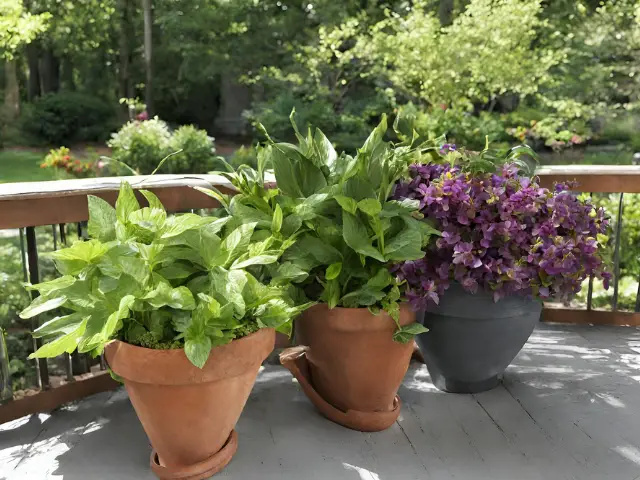When it comes to container gardening, finding the ideal balance of shade and sun can be a bit challenging. However, with proper planning and careful selection of plants, you can create a stunning container garden that thrives in both shady and sunny conditions. Here are some useful tips to help you achieve the perfect balance:
1. Assess your garden’s location: Before starting your container garden project, it’s crucial to understand the specific areas in your garden that receive varying levels of light throughout the day. Observe which spots receive direct sunlight, partial shade, or full shade. This will help you determine where to place your containers accordingly.
2. Select appropriate containers: Choosing the right containers is essential to create an optimal environment for your plants. Consider using lightweight pots or hanging baskets that can be easily moved around as needed to provide the right amount of exposure to sunlight.
3. Choose versatile plants: Opt for plants that are adaptable to a wide range of light conditions. Some popular choices include ferns, begonias, impatiens, and coleus. These varieties tend to thrive in part shade but can also tolerate some sun exposure.
4. Group plants strategically: Take advantage of the varying light conditions by grouping plants with similar light preferences together in one container. This allows you to move them around as needed to find their ideal spot in your garden.
5. Provide artificial shade: If a particular area in your garden receives too much sunlight, you can create artificial shade using umbrellas or other shading devices. This will help protect sensitive plants from excessive heat and sunburn.
6. Consider vertical gardening: Utilize trellises or walls for vertical gardening purposes, which allow you to grow climbing plants such as morning glories or clematis that require more sunlight while still providing some shaded areas for other plant varieties below.
7. Monitor watering needs: Plants in containers tend to dry out more quickly than those grown directly in the ground. Regularly check the moisture level in the soil and adjust your watering schedule accordingly. Shady spots usually require less water than sunnier areas.
8. Rotate containers: To ensure all plants receive an equal amount of sunlight, periodically rotate their positions. This helps prevent uneven growth and promotes healthier plants overall.
9. Use reflective surfaces: Install reflective surfaces, such as mirrors or white walls, near your container garden to bounce extra light onto shaded areas. This can help meet the light requirements of even the most sun-loving plants.
10. Experiment and observe: Container gardening is all about experimentation and finding what works best for your specific conditions. Monitor how your plants respond to their current locations and make adjustments as necessary to achieve a perfect balance of shade and sun.
Creating an ideal balance of shade and sun in a container garden may require some trial and error, but with careful planning and consideration of plant preferences, you can create a beautiful, thriving garden that brings joy throughout the seasons. So go ahead, put these tips into practice, and enjoy nurturing your own little oasis of greenery!













